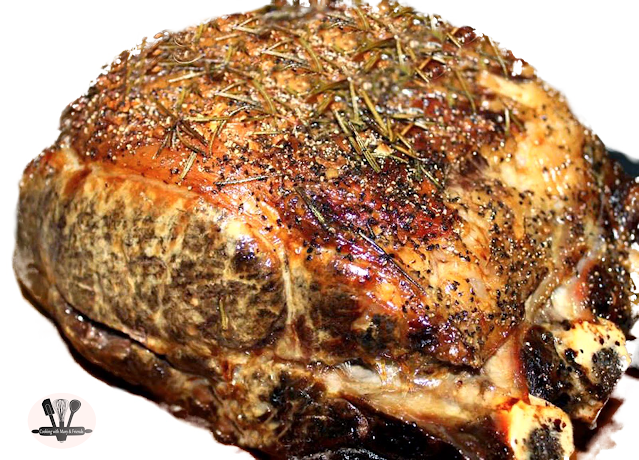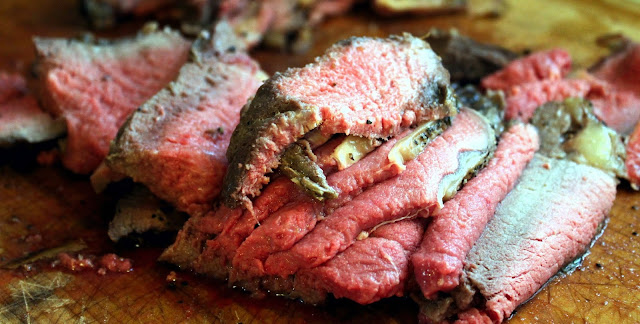I saw this recipe the other day over on my friend, The Duchess of Cansalot's page, and I knew I just had to try it. I'd already made Spicy Brown Mustard and Oktoberfest Beer Mustard, so this was a "must make" to add to the collection.
Bourbon, brown sugar and mustard seeds all combine in this tangy, sweet, spicy, with a bite mustard.

Did you know? Mustard is a condiment made from the seeds of a mustard plant (white or yellow mustard, Sinapis hirta; brown or Indian mustard, Brassica juncea; or black mustard, B. nigra). The whole, ground, cracked, or bruised mustard seeds are mixed with water, salt, lemon juice, or other liquids, and sometimes other flavorings and spices, to create a paste or sauce ranging in color from bright yellow to dark brown. The tastes range from sweet to spicy.
Commonly paired with meats, sushi, pizza, breads, potatoes, and cheeses, mustard is a popular addition to sandwiches, salads, steaks, tofu, yogurt, hamburgers, and hot dogs. It is also used as an ingredient in many dressings, glazes, sauces, soups, and marinades; as a cream or a seed, mustard is used as a condiment and in the cuisine of India and Bangladesh, the Mediterranean, northern and southeastern Europe, Asia, the Americas, and Africa, making it one of the most popular and widely used spices and condiments in the world.
The Romans were probably the first to experiment with the preparation of mustard as a condiment. They mixed unfermented grape juice, known as "must,"with ground mustard seeds (called sinapis) to make "burning must," mustum ardens — hence "must ard." A recipe for mustard appears in Apicius (also called De re coquinaria), the anonymously compiled Roman cookbook from the late 4th or early 5th century; the recipe calls for a mixture of ground mustard, pepper, caraway, lovage, grilled coriander seeds, dill, celery, thyme, oregano, onion, honey, vinegar, fish sauce, and oil, and was intended as a glaze for spit-roasted boar. (source: Wikipedia)

RECIPE
Ingredients
1 cup bourbon
½ cup water
1 cup brown mustard seeds
½ cup cider vinegar
6 tbls dry mustard powder
1 cup lightly packed brown sugar
1/4 cup raw local honey
Method
Heat bourbon, water and seeds until mixture just comes to a boil; remove from heat and steep for about 2 hours.
Transfer soaked seeds to the bowl of a food processor; process until smooth, or leave grainy. Add vinegar, mustard powder, brown sugar, and honey; process briefly to mix. Transfer to a medium saucepan.
Over medium heat, stirring constantly, bring mustard to a boil; continue to boil mustard until it reduces to your desired thickness, but remember it will thicken further upon cooling. Taste and adjust seasonings to your likening (add additional water if needed if the mustard is getting too thick).
Fill hot jars to a generous ¼-inch head-space, tamping down the mustard into the jar. Remove air bubbles by running a plastic knife around edges and middle of the jar.
Wipe rims, top jars with lids and seals and process in a boiling water bath for 10 minutes. Allow to rest for 5 minutes in the hot water prior to removing the jars to a clean towel on your kitchen counter-top. Let sit undisturbed 24 hours. Store in pantry.
Shelf life is one year. Opened jars need to be refrigerated.
Note - As with all homemade mustard, the flavors develop and mellow over time, so it's best to let them sit for a few weeks, or even a month or more, before using.
Yield: 3 - 8 oz. jelly jars
Enjoy,
Mary
© Cooking with Mary and Friends. Unauthorized use and/or duplication of this material without express and written permission from this blog’s author and/or owner is strictly prohibited. Excerpts and links may be used, provided that full and clear credit is given to Cooking with Mary and Friends with appropriate and specific direction to the original content.


































.jpg)

















